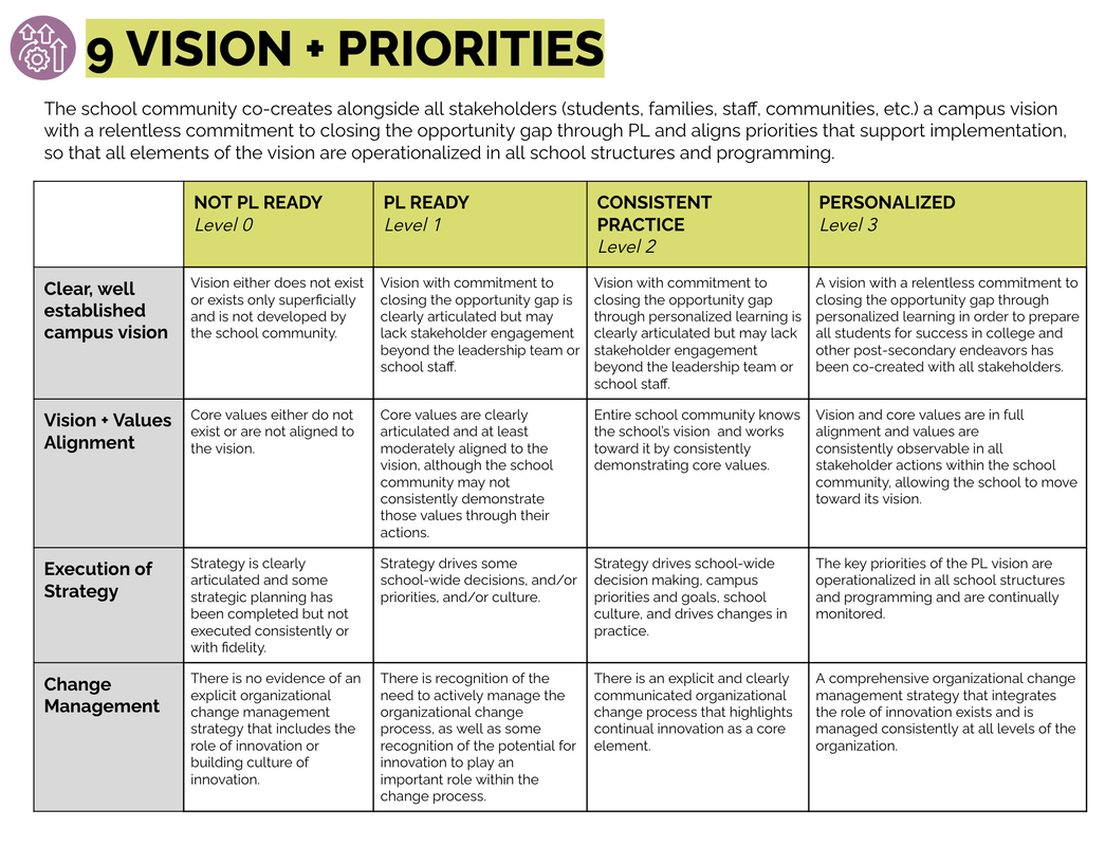
Look-fors by indicator to be used during a campus visit
Not PL Ready/ PL Ready |
Consistent Practice/ Personalized |
|
Clear, Well Established Campus Vision |
|
|
Vision + Values Alignment |
Core values are either not visible or are not evidenced through practices on campus. |
|
Execution of Strategy |
|
|
Change Management |
|
|

